The Smart Buyer’s Guide to Handmade Pottery (and How to Spot the Good Stuff)
I’ve spent more years than I can count with my hands covered in clay—feeling the gritty texture of stoneware, the silky slip of porcelain, and yeah, the soul-crushing defeat of a pot collapsing on the wheel. It’s a journey. And when you hold a finished piece of ceramic, you’re holding the very end of that journey.
In this article
So many of us are drawn to handmade pottery. We love that a mug isn’t perfectly symmetrical or that a glaze has unique, unpredictable drips. But there’s a huge difference between charming character and just plain poor craftsmanship. A truly good piece isn’t just pretty; it’s durable, functional, and safe to use every single day.
My goal here isn’t to just throw a list of gift ideas at you. I want to arm you with the knowledge I’ve gained from thousands of hours in the studio. I want to show you how to pick up a piece, turn it over in your hands, and instantly know its quality. This way, you can choose a gift that isn’t just a beautiful object, but a treasure that will last a lifetime.
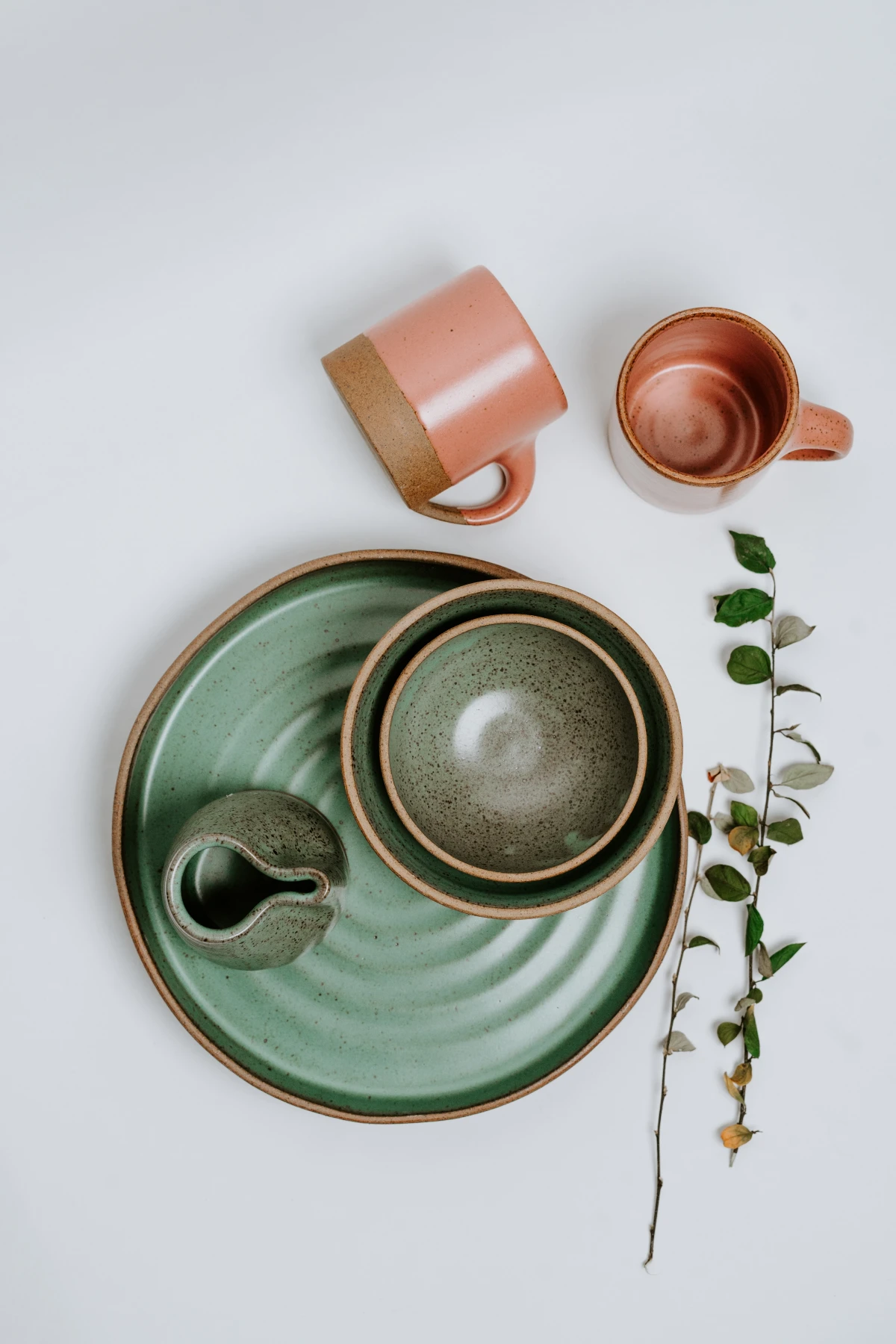
First Things First: Know Your Clay
Before you even think about mugs or bowls, you gotta understand what they’re made of. The type of clay and how it’s fired dictates everything—strength, safety, and whether you can pop it in the dishwasher. Honestly, not knowing this is like buying a car without checking under the hood. Most handmade pottery falls into one of three camps.
- Earthenware: This is the OG clay, what you see in classic terracotta pots. It’s fired at low temperatures, which means it stays porous. That’s fantastic for houseplants because it lets the roots breathe. But for dinnerware? It’s a no-go. It absorbs liquids and bacteria (gross) and chips easily. If you find a beautiful earthenware piece, think of it as a pen holder or a purely decorative item, not your morning coffee mug.
- Stoneware: This is the undisputed workhorse of the functional pottery world. Fired much hotter, stoneware becomes vitrified—a fancy word meaning it turns into a dense, stone-like material that’s no longer porous. It’s tough, chip-resistant, and perfect for the daily grind. When made right, it’s almost always dishwasher and microwave safe. Most of the high-quality, handmade mugs, plates, and bowls you’ll find at markets are made from stoneware for this very reason.
- Porcelain: Think of porcelain as the most refined and elegant of the clays. It’s known for its bright white color and can even be translucent when thin. Fired at incredibly high temperatures, it’s extremely dense and strong. However, it’s also a trickier material to work with, so you’re often paying for the potter’s advanced skill. While strong, a super-thin porcelain piece can be a bit more brittle than a chunky stoneware mug.
A good potter should be able to tell you exactly what kind of clay they used. If they seem unsure, that’s a bit of a red flag.
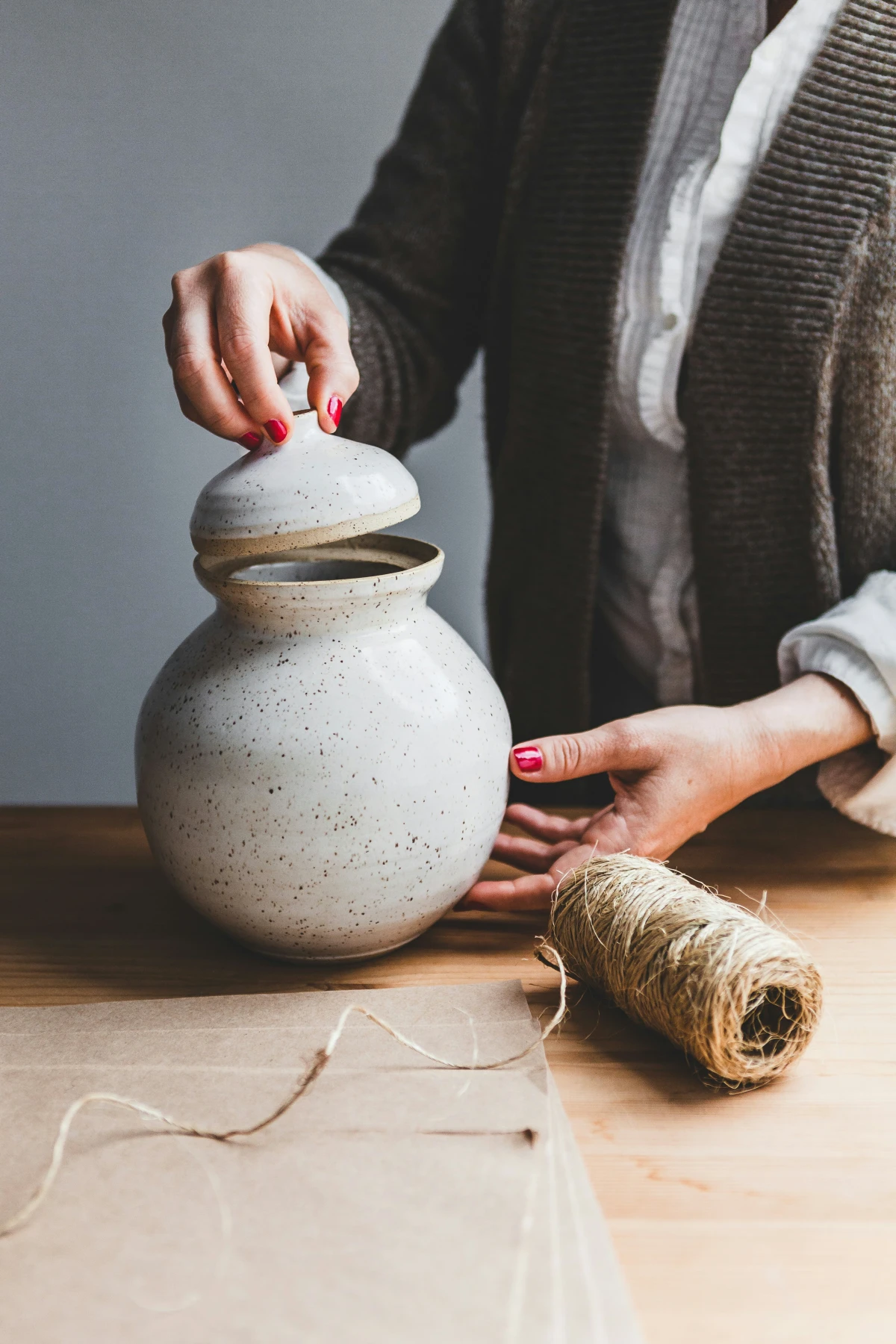
The Marks of a Pro: What to Look For
When I walk through a craft fair, my hands do the seeing. I pick things up. I feel their balance, their texture, and the tiny details that separate an amateur’s work from a professional’s. Here’s my cheat sheet for what to look for.
The 30-Second Mug Inspection
A mug is probably the most personal piece of pottery you can give. The person you give it to will hold it every single day. It has to feel right. Here’s how to check:
- The Handle Test: Can you comfortably slip two or three fingers through it? A dinky one-finger handle feels awkward and insecure. The handle should also feel like it grew out of the mug, not like it was just slapped on.
- The Lip Test: How does the rim feel? A super thick, chunky rim can be clumsy to drink from, while a paper-thin one might feel fragile. A great rim is usually slightly tapered or rounded for a perfect sip.
- The Scratch Test: This is my non-negotiable. Flip the mug over and run your finger across the bottom ring where it sits on the table. It should be sanded perfectly smooth. A rough, scratchy bottom is a sign of laziness and will ruin any wooden table it touches. I learned this the hard way early in my career when a customer told me my bowls had scratched her brand-new dining table. I was mortified! Now I’m obsessive about it. If it’s scratchy, put it down and walk away.
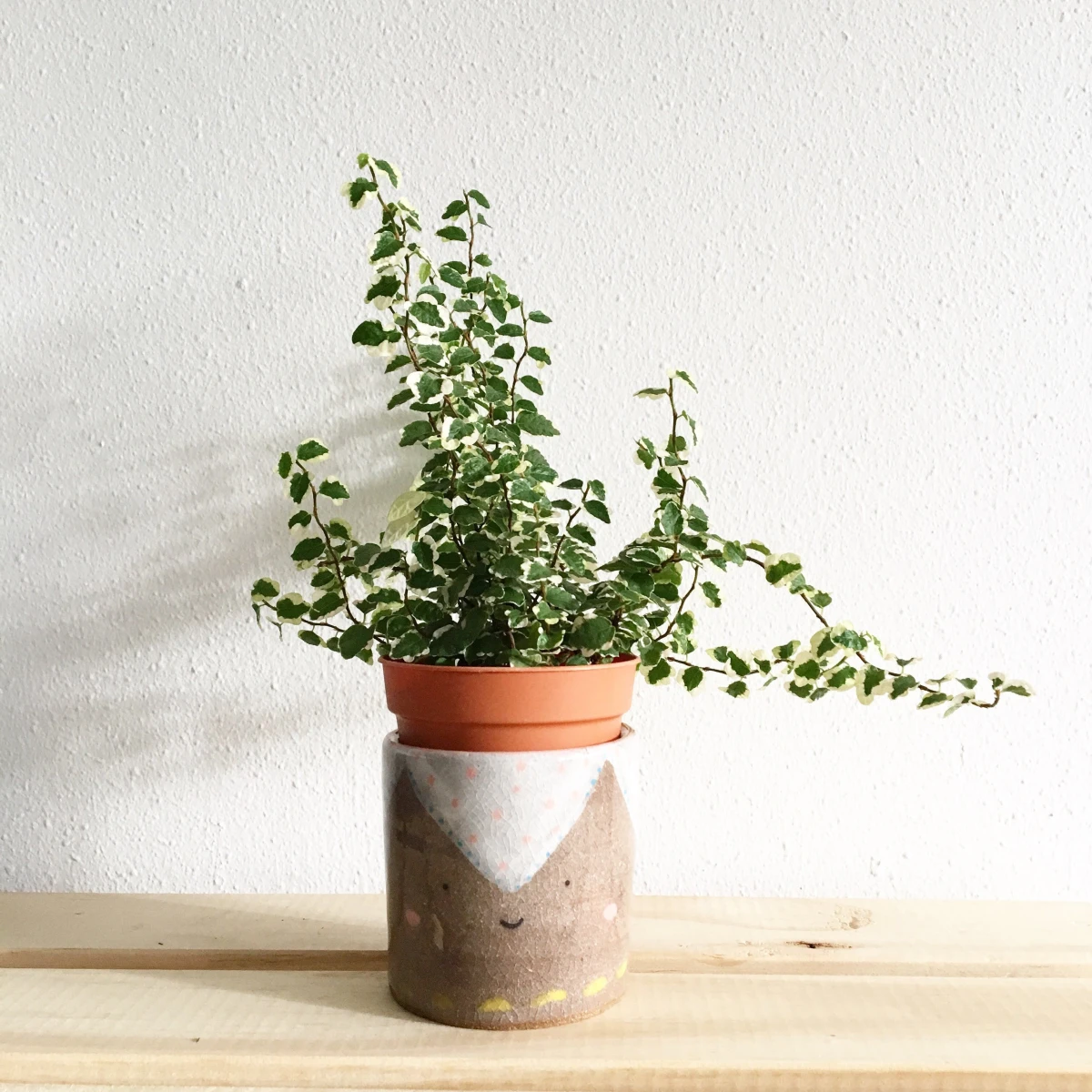
What Makes a Great Bowl
A bowl’s form has to match its function. A wobbly or poorly designed bowl is just a frustrating piece of sculpture.
It should sit dead flat on the table—no wobbles! And look at the inside curve. It should be a gentle, sweeping curve that’s easy to scrape with a spoon. You don’t want any weird, sharp angles at the bottom trapping the last bits of your soup or cereal. Also, make sure the interior is fully coated in a smooth, durable glaze. Any pits or bare spots can trap food over time.
Choosing a Planter That Actually Works
A handmade planter is a fantastic gift, but it needs to be a good home for a plant first and a pretty object second.
Drainage is everything. I cannot say this enough. A planter must have a drainage hole. Without it, water pools, and the plant’s roots will rot. It’s a guaranteed plant-killer.
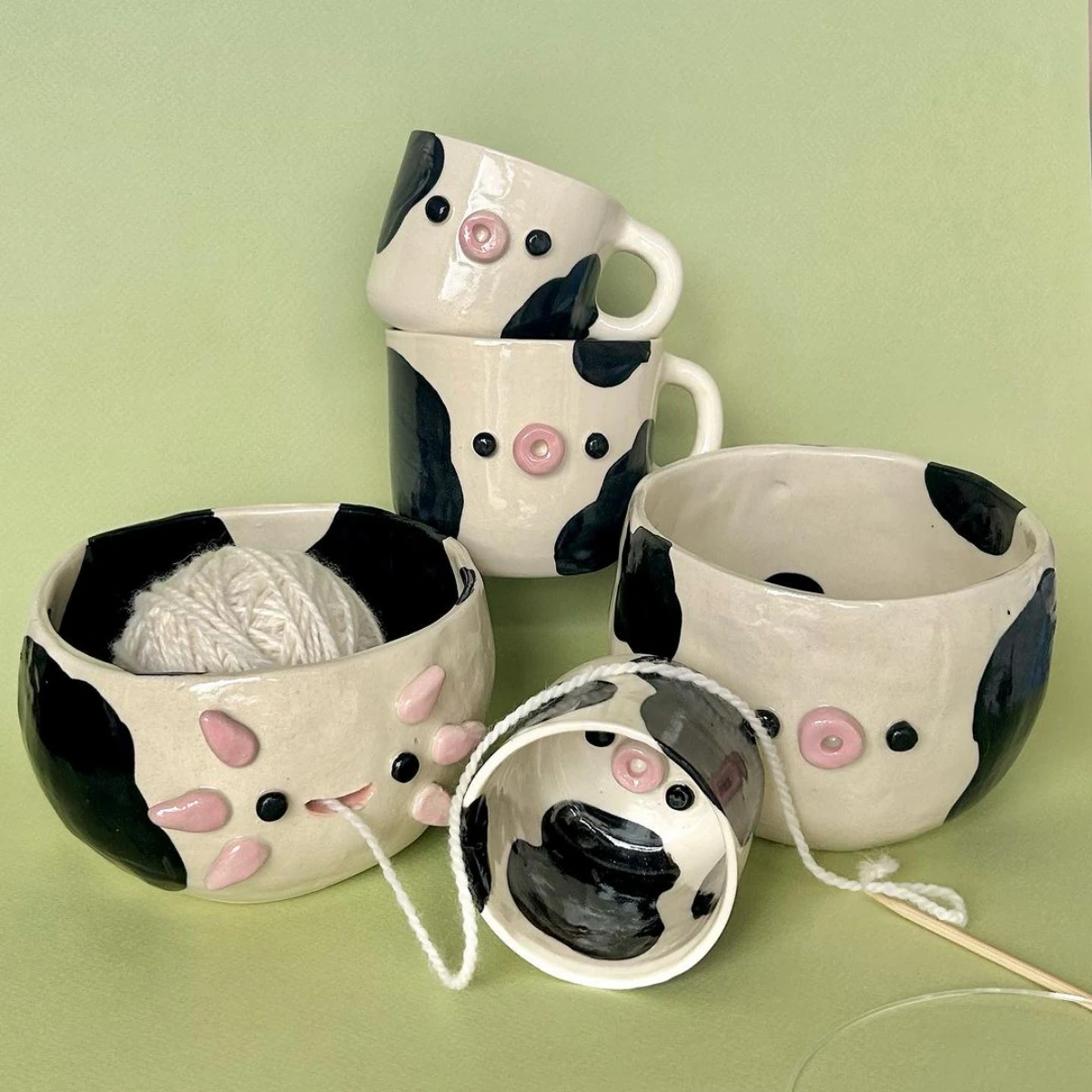
QUICK TIP: Found the perfect pot but it has no hole? Use it as a cachepot! Just keep the plant in its cheap plastic nursery pot (which has drainage) and hide it inside the beautiful ceramic one. You get the look you want without the tragedy of root rot.
So, What Should I Expect to Pay?
Okay, let’s talk about money. You see a mug for $45 and think, “I can get one for $5 at a big-box store!” And you’re right. But you’re not paying for the same thing. That $45 price tag reflects a massive amount of labor, skill, and resources.
Think about it: for one mug, the artist has to prep the clay, throw it, trim it, pull and attach a handle, let it dry slowly, fire it once, sand it, wax the bottom, glaze it, and then fire it again for many more hours. That one mug is handled at least 15 times.
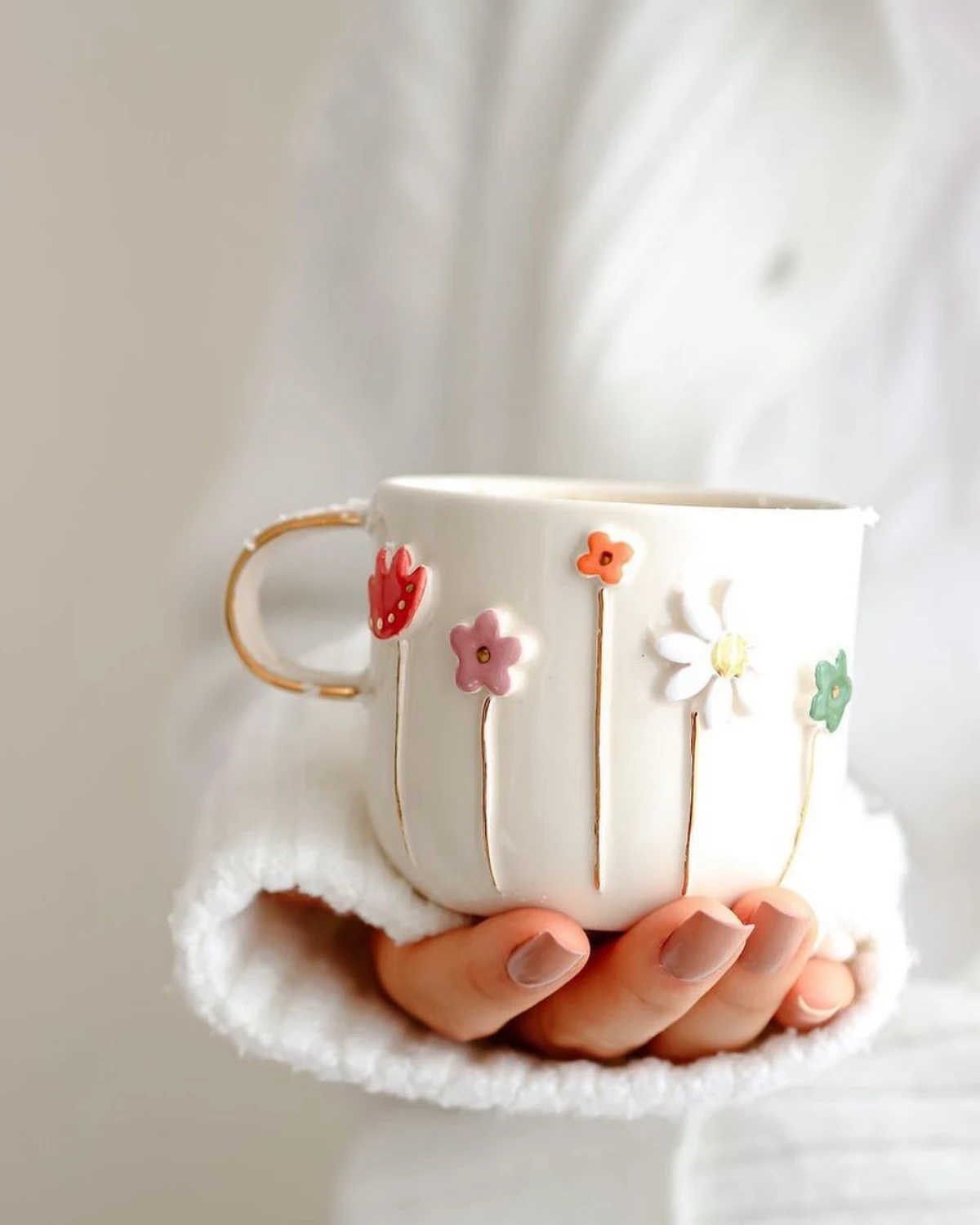
You’re also paying for the failures—the pieces that cracked, warped, or had glaze flaws. The price of the successful pieces helps cover the cost of the ones that didn’t make it. So here’s a rough guide:
- A well-made, handmade mug: Expect to pay between $35 and $75.
- A small to medium planter: Usually in the $30 to $60 range.
- A large serving bowl or platter: Don’t be shocked by prices from $100 to $250 or more. These are difficult to make and take up a lot of valuable kiln space.
When you buy from an artist, you’re not just buying an object. You’re supporting a person’s skill, time, and ability to keep making beautiful things.
Buying and Caring for Your New Pottery
Where to Find the Good Stuff
Your best bet is always a studio sale or a juried craft fair where you can meet the maker. You can hold the work and ask questions. But buying online is great too! Just be a savvy shopper. Look for shops with multiple, clear photos. They should list dimensions and, most importantly, be clear about what the clay is and if it’s safe for food, dishwashers, and microwaves.
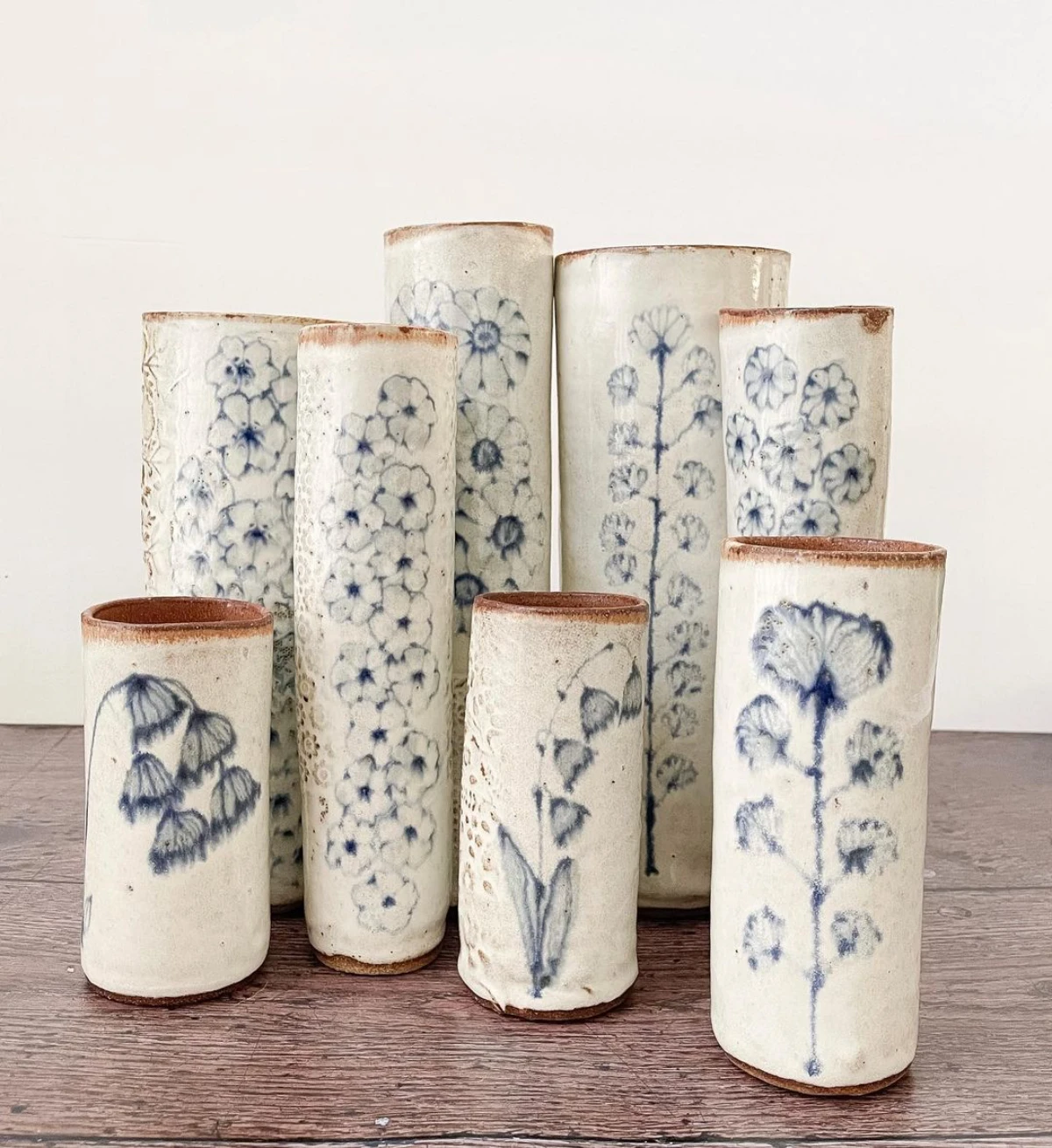
Pro Tip for Online Buyers: Don’t be shy! Send the seller a message before you buy. A simple note like this works wonders: “Hi, I absolutely love this piece! Before I purchase, could you confirm for me that it’s 100% food, dishwasher, and microwave safe? Thanks so much!” A professional will be happy to answer.
How to Keep It From Breaking
Most stoneware is tough, but it’s not invincible. The biggest enemy is thermal shock—a sudden, extreme change in temperature.
A word of warning: Never, ever take a ceramic dish from the fridge and put it directly into a hot oven. Don’t pour boiling water into an ice-cold mug. Let the piece come to room temperature first to avoid a heartbreaking crack.
And while most pieces are dishwasher safe, harsh detergents can dull a glaze’s shine over many years. If it’s a piece you truly treasure, handwashing is always the kindest choice.
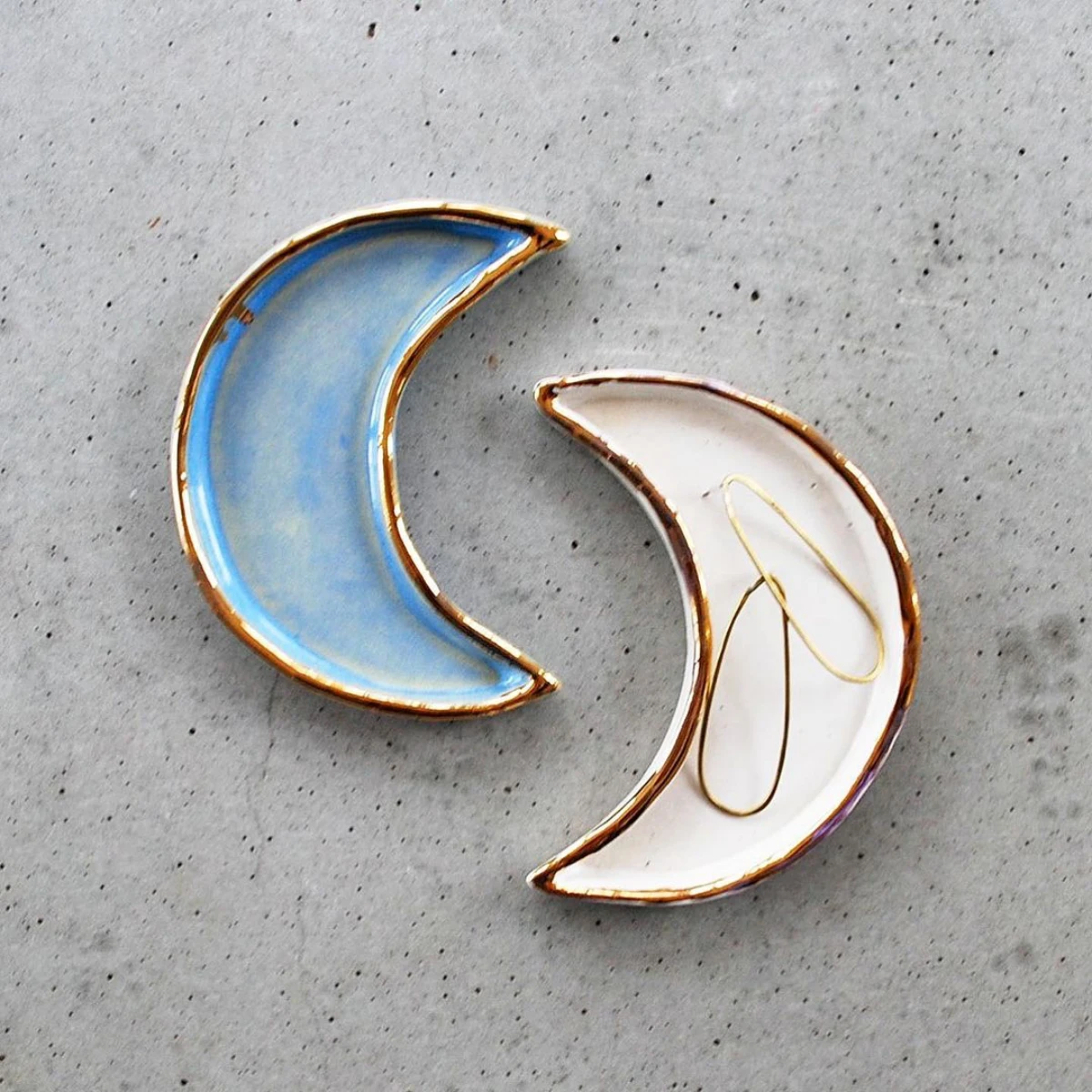
By learning to see with your hands and understand the language of clay, you’re ready to find a piece that is not only stunning but a true joy to use. It becomes more than a gift; it becomes part of a daily ritual.
Galerie d’inspiration
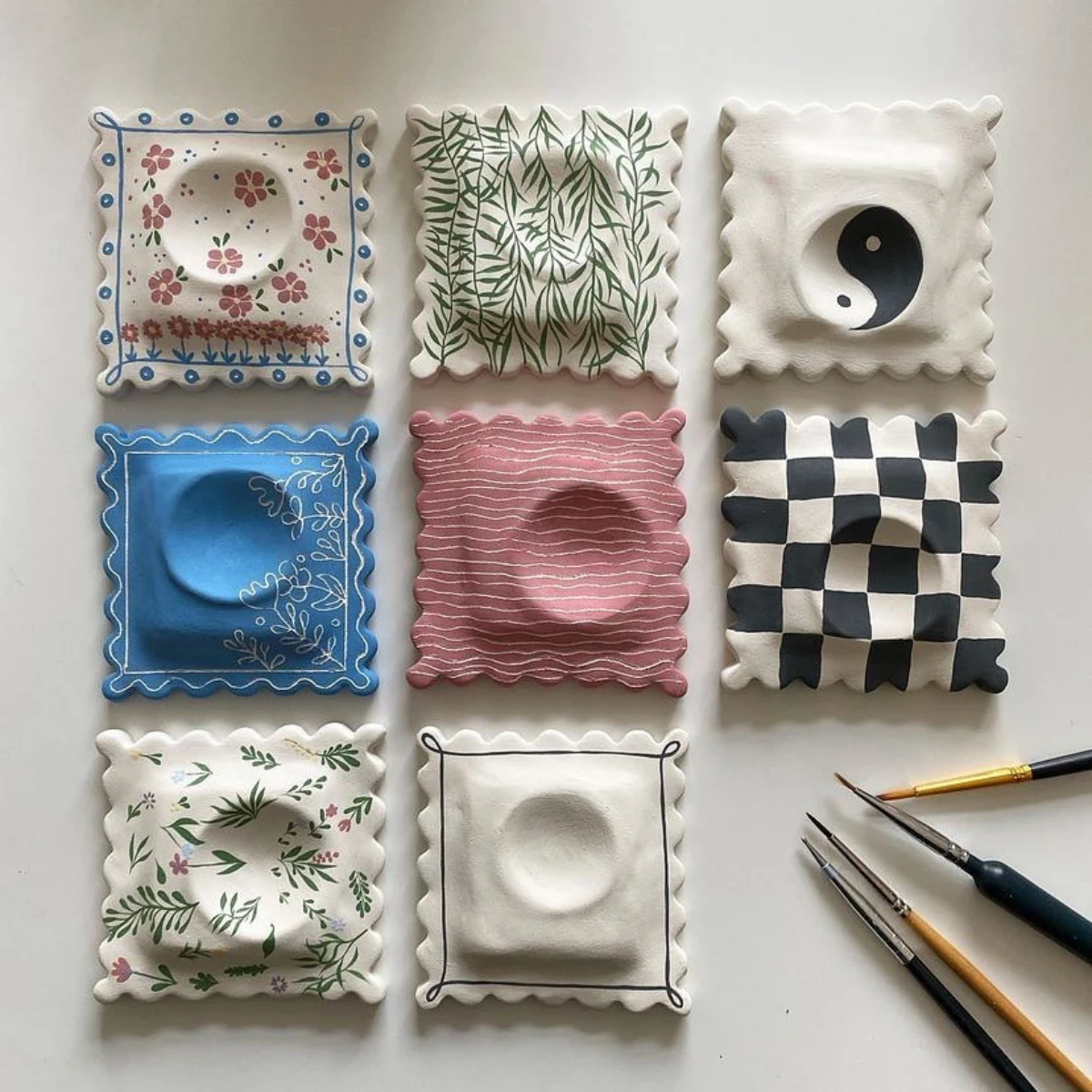
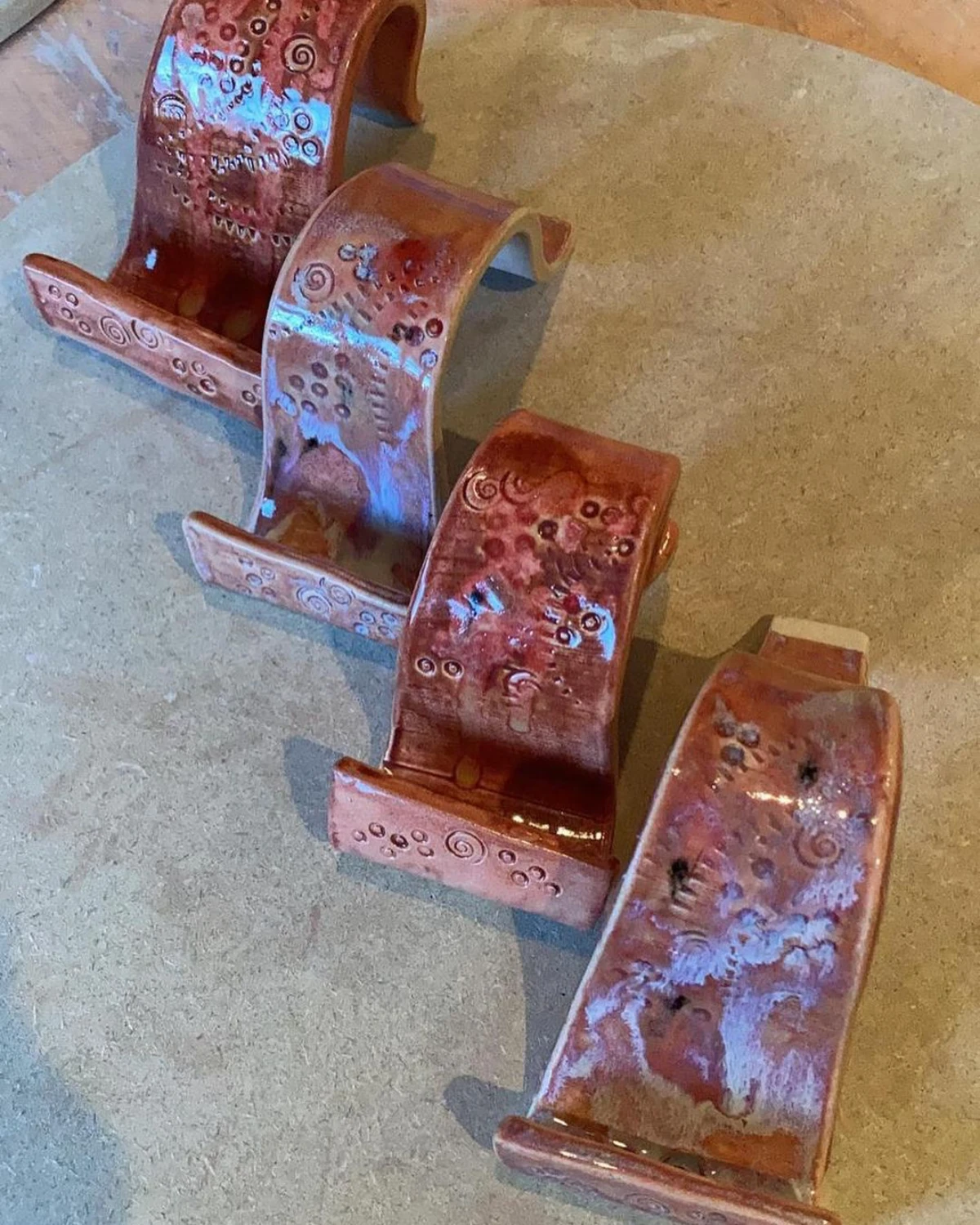
- The Lip Test: Gently run your finger along the rim of a mug or bowl. It should feel smooth and comfortable, with no sharp spots or tiny cracks. This is the first sign of a piece that’s a joy to use.
- The Wobble Check: Place the piece on a flat surface. Does it sit perfectly stable, or does it rock? A wobbly base is a sign of rushed work and will be annoying on your dining table.
- The Handle Hold: For mugs, don’t just look at the handle—hold it. Do two or three of your fingers fit comfortably? Does it feel balanced and sturdy, or thin and fragile at the joints?
The secret? A great potter thinks about ergonomics just as much as aesthetics.
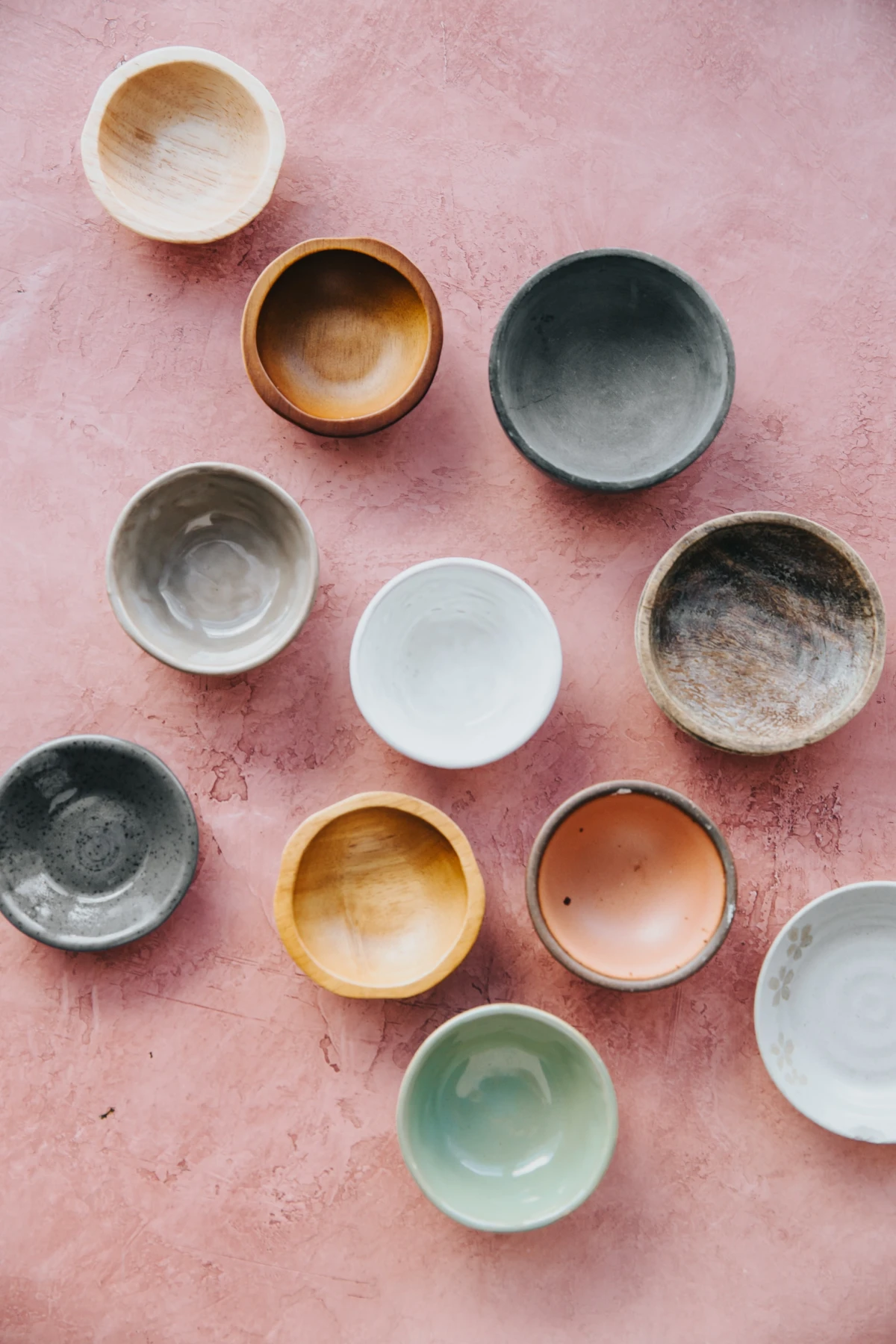
Did you know? The subtle variations in a handmade glaze aren’t just for looks. They are a map of the pot’s journey through the fire, showing where the heat was most intense or how the different minerals melted and flowed together.
This is why no two pieces are ever identical. When you see a drip that runs just so, or a spot where the color deepens, you’re seeing a unique chemical reaction frozen in time. It’s the artist’s skill mixed with the beautiful unpredictability of the kiln—a story written in glass on the surface of the clay.
The bottom of a pot tells a story. Before you buy, always turn it over. A well-finished piece will have a smooth, sanded foot ring to prevent it from scratching your furniture. You’ll also likely find the potter’s mark or ‘chop’—a unique signature stamped into the clay. This mark is more than a logo; it’s a seal of approval from the creator, a sign that they stand behind their work. Some potters have online registries of their marks, allowing you to learn more about the hands that crafted your piece.










